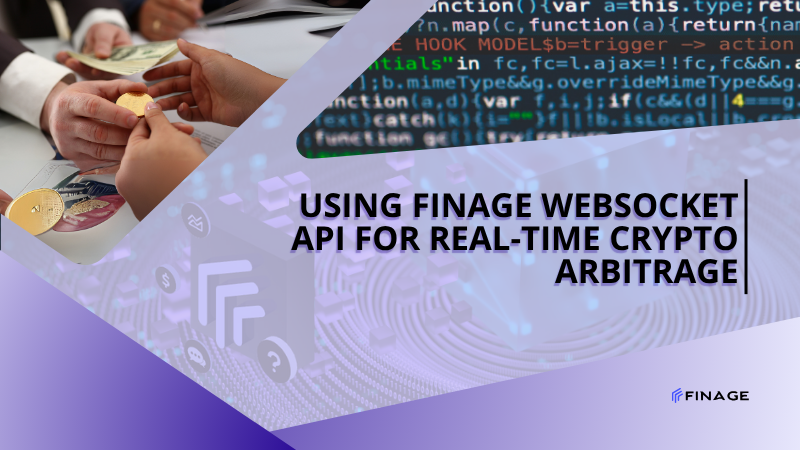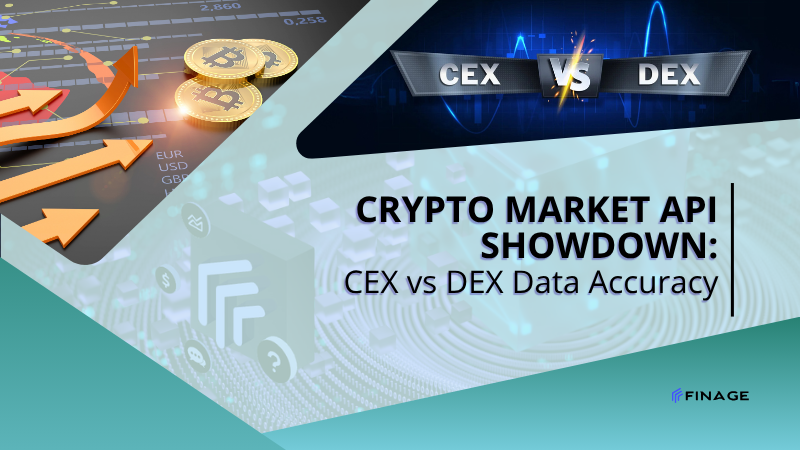What Are the Risks of DeFi Smart Contracts? Monitor Instantly with Finage DEX API
6 min read • April 22, 2025

Introduction
DeFi, or decentralized finance, has revolutionized the way people interact with financial systems, offering fast, borderless, and permissionless alternatives to banks, brokers, and traditional finance. But with innovation comes risk, and nowhere is that more evident than in DeFi smart contracts. These self-executing lines of code now hold billions of dollars in value, yet they remain one of the most vulnerable aspects of the blockchain ecosystem.
From rug pulls and flash loan exploits to logic errors and governance attacks, smart contract vulnerabilities have cost users millions in lost assets. Even projects with major audits have suffered attacks. As a developer, investor, or platform builder, understanding these risks is critical. And more importantly, having the tools to monitor smart contract activity in real time can help you spot danger before it’s too late.
This is where Finage makes a real difference. By offering real-time DEX API access, Finage empowers builders and traders to track token behavior, contract movements, liquidity shifts, and unusual volume in a way that puts them ahead of the market. In this blog, we’ll explore the key risks in DeFi smart contracts, how they happen, and how to use Finage’s DEX data to monitor the health and safety of DeFi protocols live.
Table of Contents
- Why Smart Contracts Are the Backbone, and Weakness, of DeFi
- The Most Common Risks in DeFi Smart Contracts
- Real-Time Monitoring: The Key to Risk Mitigation
- How Finage’s DEX API Helps You Track Suspicious Contract Activity
- Using DEX Data to Improve Safety and Transparency in DeFi
- Final Thoughts
Why Smart Contracts Are the Backbone, and Weakness, of DeFi
Smart contracts are what make DeFi possible. These autonomous scripts run on blockchains like Ethereum and Binance Smart Chain, automatically executing financial logic: lending, borrowing, swapping, staking, and more. They remove the need for intermediaries, making finance faster and more open.
But here’s the flip side, once deployed, smart contracts are immutable. If there’s a bug in the code, it can’t be easily fixed. If someone finds an exploit, they can drain liquidity pools in seconds. And with DeFi protocols constantly forking and innovating, smart contracts are growing in number and complexity faster than most teams can audit them.
This has led to some of the biggest hacks in crypto history. The issue isn’t always bad intentions, it’s often just bad code. And when code runs billions in value, any error becomes an open door for attackers.
The Most Common Risks in DeFi Smart Contracts
Understanding the specific risks of DeFi smart contracts is crucial if you want to build or trade safely in this space. Reentrancy is one of the most well-known issues, where an attacker repeatedly calls a function before the previous one finishes executing, often draining funds. Then there’s flash loan manipulation, where attackers use large loans with no collateral to manipulate token prices and exploit weak logic in lending protocols.
Access control errors are another major threat. If developers forget to restrict who can call certain administrative functions, attackers can seize control of contracts. Even seemingly minor mistakes, like rounding errors, outdated price oracles, or misconfigured token approvals, can be catastrophic.
What makes these risks so dangerous is that they unfold quickly and silently. Most users don’t realize a contract has been compromised until their tokens are already gone. That’s why real-time monitoring of smart contract activity is so essential, you can’t fix what you can’t see coming.
Real-Time Monitoring: The Key to Risk Mitigation
The fastest way to react to a DeFi exploit is to see it happen in real time. That means tracking the smart contract’s behavior across decentralized exchanges, monitoring sudden shifts in liquidity, large token transfers, or abnormal slippage that might indicate something is wrong.
Traditional audit reports are helpful, but they’re static. They give you a point-in-time snapshot, not an ongoing heartbeat of contract activity. What you need is live DEX data, updated second by second, to identify when something suspicious is unfolding.
This kind of visibility lets you do more than react. It lets you build alerts, protective features, and even automatic failsafes that pause trading or remove exposure when smart contract activity crosses a risk threshold.
How Finage’s DEX API Helps You Track Suspicious Contract Activity
Finage’s DEX API is designed to deliver exactly the kind of real-time DeFi intelligence you need to stay one step ahead of vulnerabilities. Whether you’re tracking token swaps on Uniswap or monitoring liquidity on PancakeSwap, Finage gives you the data feed you need to analyze live smart contract interactions.
Let’s say you’re managing a DeFi protocol and suddenly see a spike in trading volume on a rarely used function within one of your smart contracts. With Finage’s API, you can detect that abnormal behavior as it’s happening, not an hour later. You can track large token movements, trace wallet activity, and compare current behavior to historical patterns to understand whether the movement is organic or exploitative.
You can also monitor liquidity pool imbalances, watch for flash loan activity, and track exchange inflows and outflows that suggest a contract is being targeted. All of this gives you the chance to pause, investigate, and potentially save millions in value before attackers succeed.
Using DEX Data to Improve Safety and Transparency in DeFi
Finage doesn’t just help developers react to problems, it helps them build smarter, more secure protocols from the start. By integrating DEX API data into your dashboards, you can give users real-time visibility into contract behavior, helping them feel more confident about where they’re putting their money.
Transparency builds trust. When users can see where liquidity is moving, how token volumes are trending, or whether any suspicious spikes are occurring, they’re more likely to stick with your project. This kind of open data access is what the DeFi space was meant to provide, and Finage helps make that vision real.
Even if you’re not building your own protocol, but trading in DeFi daily, having access to this kind of data gives you an edge. You can avoid exploit-prone contracts, exit liquidity pools before they collapse, and participate in DeFi with the clarity that comes from real-time data.
Final Thoughts
DeFi smart contracts are powerful, but they’re also risky. With billions of dollars flowing through autonomous code, even a small mistake can lead to massive losses. That’s why understanding the risks of DeFi smart contracts and having the tools to monitor them in real time is essential for builders, traders, and platforms alike.
Finage provides the infrastructure to do exactly that. With real-time DEX APIs, you can track smart contract behavior as it happens, spot suspicious patterns, and build tools that keep your users protected. Whether you're managing a DeFi protocol or just trying to avoid the next exploit, Finage gives you the live insight to trade, build, and invest with confidence.
Don't wait for the post-mortem. Monitor, protect, and grow with Finage, where data turns risk into opportunity.
You can get your Real-Time and Historical DEX Data with a free DEX Data API key.
Build with us today!
Claim Your Free API Key Today
Access stock, forex and crypto market data with a free API key—no credit card required.

Stay Informed, Stay Ahead
Finage Blog: Data-Driven Insights & Ideas
Discover company news, announcements, updates, guides and more


